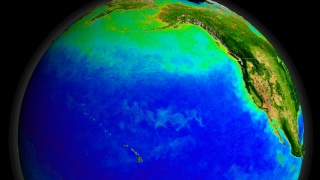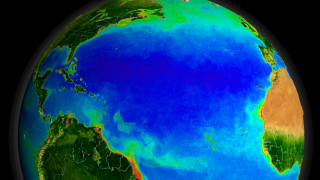Earth
ID: 10971
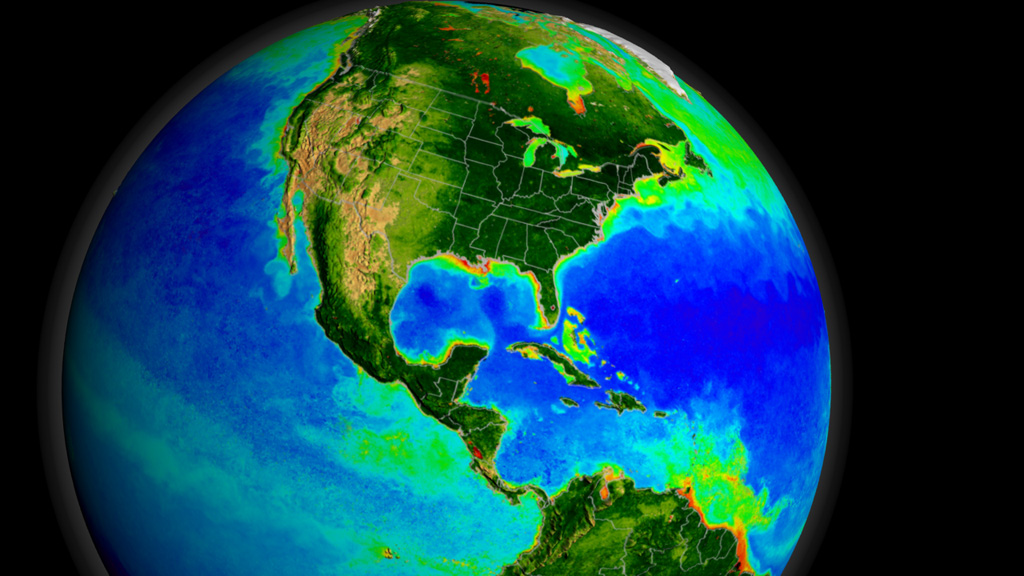
Turbulent storms churn the ocean in winter, adding nutrients to sunlit waters near the surface. This sparks a feeding frenzy each spring that gives rise to massive blooms of phytoplankton. Tiny molecules found inside these microscopic plants harvest vital energy from sunlight through photosynthesis. The natural pigments, called chlorophyll, allow phytoplankton to thrive in Earth's oceans and enable scientists to monitor blooms from space. Satellites reveal the location and abundance of phytoplankton by detecting the amount of chlorophyll present in coastal and open waters—the higher the concentration, the larger the bloom. Observations show blooms typically last until late spring or early summer, when nutrient stocks are in decline and predatory zooplankton start to graze. The visualization below uses NASA SeaWiFS data to map bloom populations in the North Atlantic and North Pacific oceans from March 2003 to October 2006.
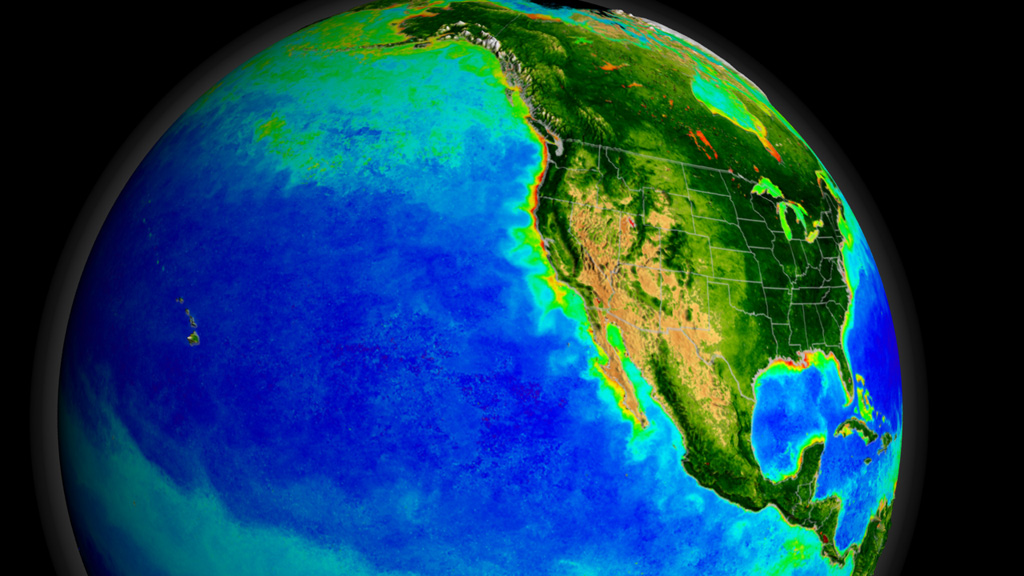
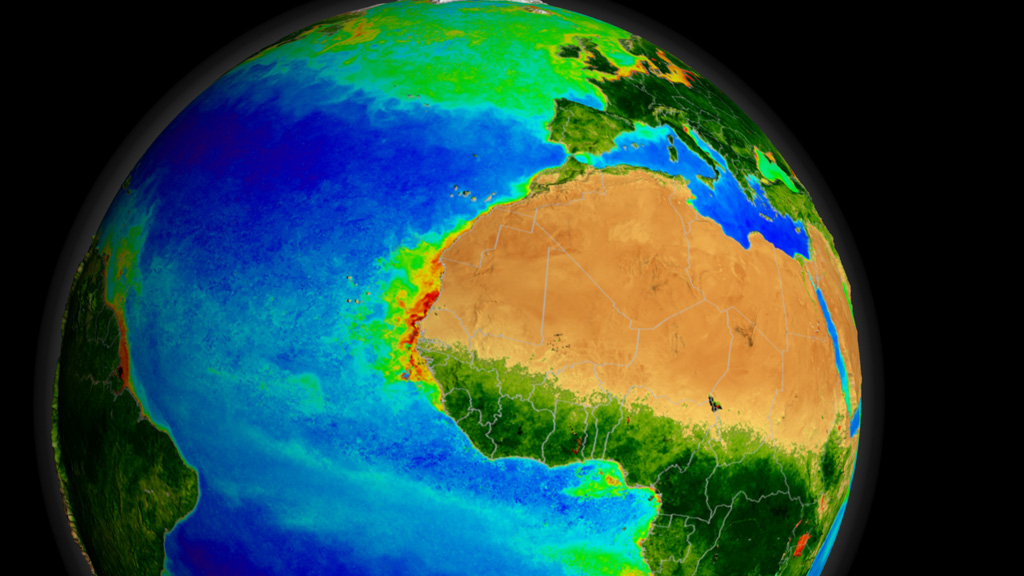

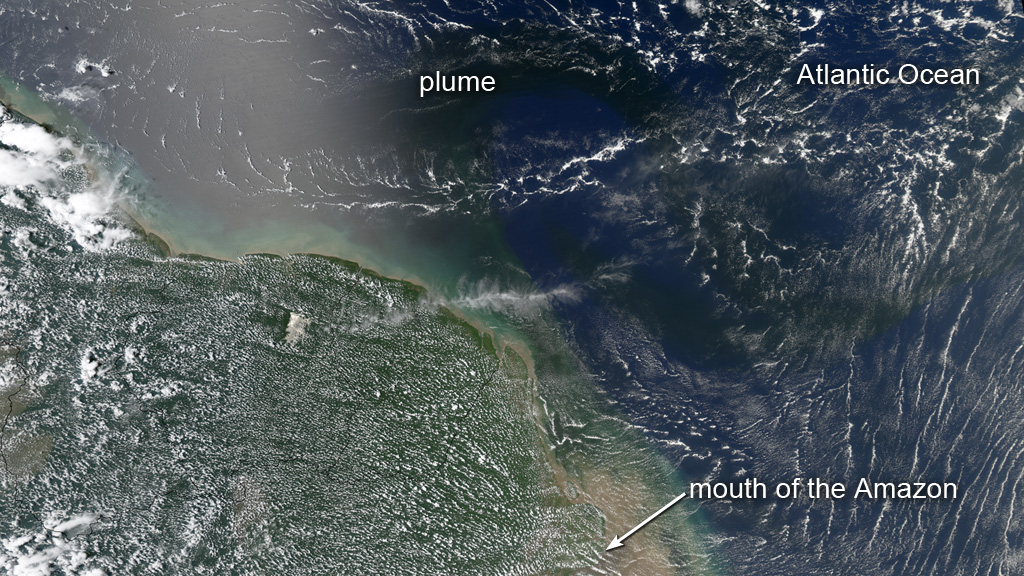
Super Blooms





Related Stories
Story Credits
Visualizers/Animators:
Alex Kekesi (Global Science and Technology, Inc.)
Lori Perkins (NASA/GSFC)
Video Editor:
Kayvon Sharghi (USRA)
Lead Scientists:
Gene Feldman (NASA/GSFC)
Michael Behrenfeld (Oregon State University)
Lead Writer:
Kayvon Sharghi (USRA)
Alex Kekesi (Global Science and Technology, Inc.)
Lori Perkins (NASA/GSFC)
Video Editor:
Kayvon Sharghi (USRA)
Lead Scientists:
Gene Feldman (NASA/GSFC)
Michael Behrenfeld (Oregon State University)
Lead Writer:
Kayvon Sharghi (USRA)
Please give credit for this item to:
NASA's Goddard Space Flight Center
NASA's Goddard Space Flight Center
Short URL to share this page:
https://svs.gsfc.nasa.gov/10971
Keywords:
SVS >> App
NASA Science >> Earth
https://svs.gsfc.nasa.gov/10971
Keywords:
SVS >> App
NASA Science >> Earth

